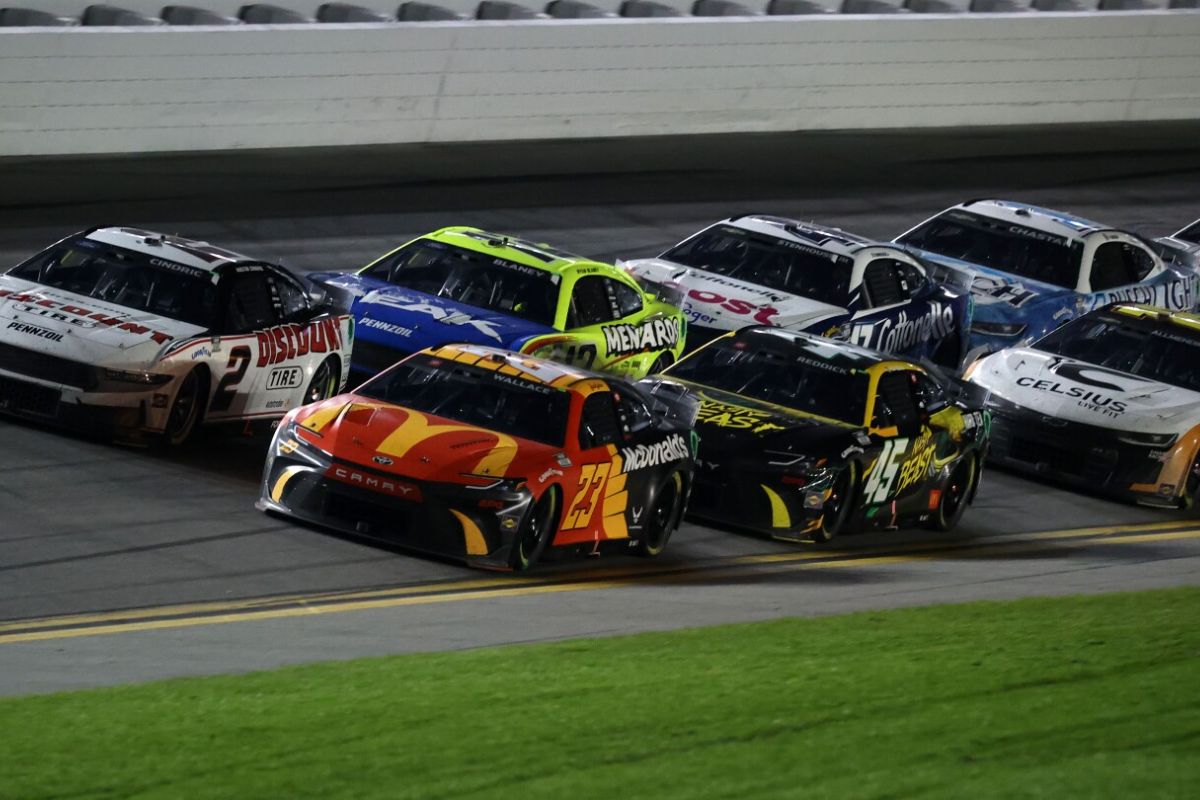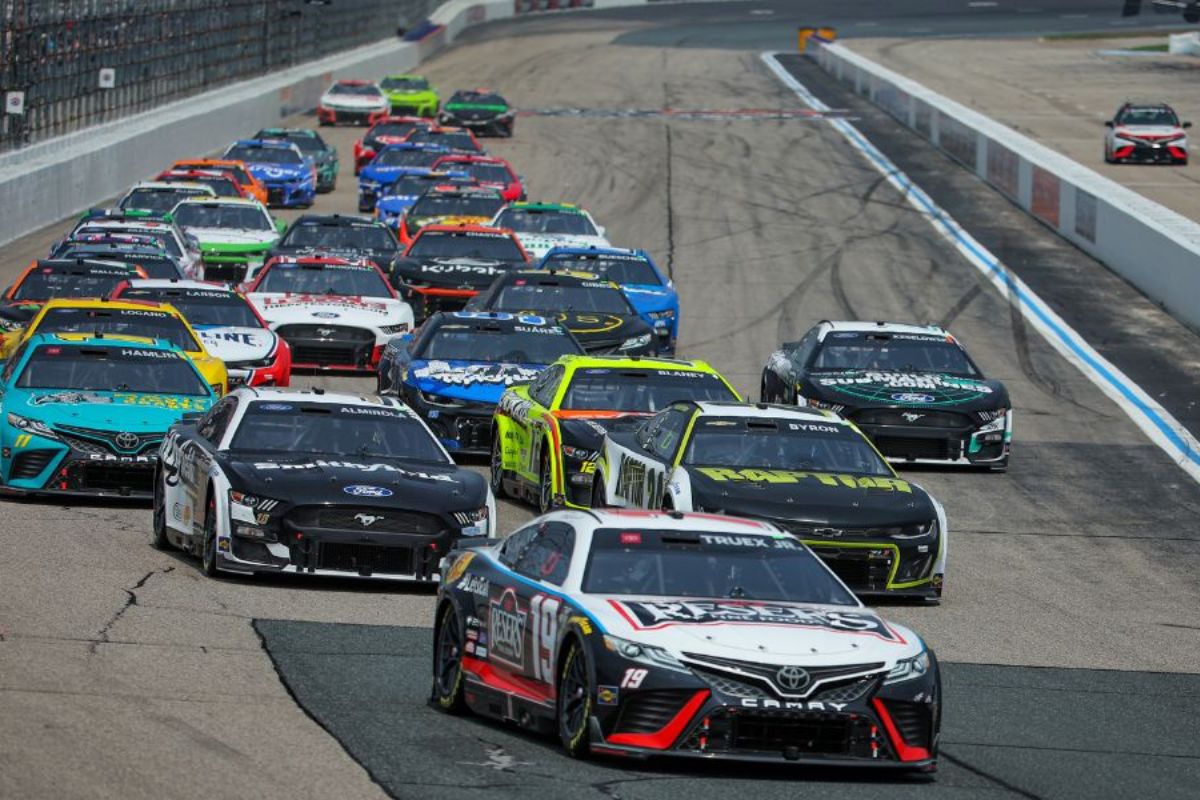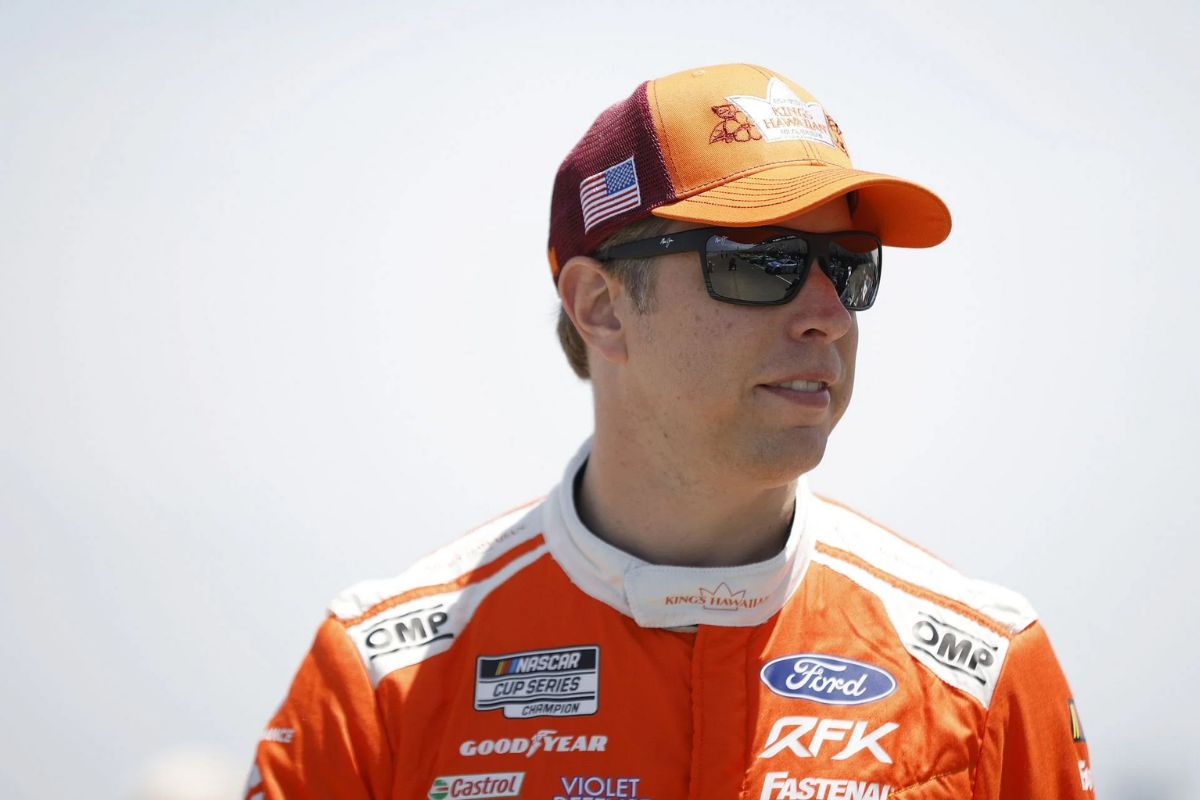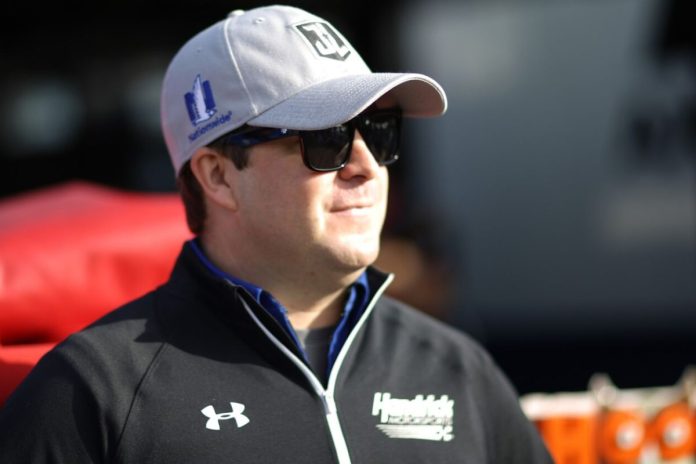TJ Majors Demands Change: In a revealing expose, TJ Majors, a distinguished NASCAR spotter, has recently brought to light the strategic intricacies that highlight the races at Talladega Superspeedway, Alabama. His advocacy for change stems from the disclosure of sophisticated fuel-saving tactics that have increasingly come to define race outcomes. Majors’ critique focuses not merely on the mechanics of fuel efficiency but on the broader implications such strategies have on the competitive spirit and integrity of racing. By questioning the prevailing norms, Majors invites a reevaluation of race strategies, hinting at potential shifts in regulations and practice.
Key Takeaways
- TJ Majors calls for revising fuel-saving strategies to prioritize racing integrity and safety.
- Majors highlights the excessive lead changes at Talladega as a strategy flaw.
- Advocates for a balance between speed and fuel efficiency to enhance race competitiveness.
- Majors suggests modifications to race rules to reduce the reliance on drafting for fuel savings.
- Emphasizes the need for NASCAR to adapt rules that encourage more genuine racing tactics.
Fuel-Saving Strategy Dominates Talladega Race
Despite the record-tying 72 lead changes at Sunday’s GEICO 500 Talladega race, the predominant fuel-saving strategy dampened the general excitement, reflecting a cautious approach that prioritized conservation over speed. This conservative racing paradigm, while vital for endurance and strategy, arguably detracted from the thrill traditionally associated with NASCAR events.
Analyzing the dynamics, it becomes evident that the strategy employed was not merely about conserving fuel but also about positioning within the pack. Drivers were seen drafting behind competitors more frequently, using the slipstream to reduce fuel consumption by lowering aerodynamic drag. This technique, while effective for saving fuel, often leads to less aggressive racing tactics as drivers avoid the lead position to benefit from the draft. Consequently, this leads to frequent lead changes, as no one maintains the front position long enough to make it a defining lead.

Teams Crack the Code: Fuel-Saving Strategy Takes Center Stage
In the third season of the Next Gen car era, NASCAR teams have increasingly prioritized mastering fuel-saving strategies, achieving significant time savings during pit stops by minimizing refueling durations. This evolution in strategy highlights a crucial shift in race tactics, driven by the unique demands of the Next Gen vehicles and the strategic intricacies of tracks like Talladega.
The focus on fuel efficiency is not just a matter of fuel conservation but a sophisticated tactic to improve track position—a crucial factor in race outcomes. By reducing the time spent on pit road, teams can take advantage of the inherent speed and aerodynamics of the Next Gen cars, which are less reliant on tire wear compared to their predecessors. This shift significantly differs from earlier strategies where tire changes were often the main focus of pit stops.
Analyzing recent races, it’s clear that teams are devising creative methods to stretch fuel mileage without compromising the car’s performance. This involves precise calculations and real-time adjustments based on race dynamics, track conditions, and weather. Drivers are now more than ever required to adapt their racing style—balancing between aggression and conservation.
Teams that can most effectively integrate these fuel strategies with other elements such as drafting techniques and pit crew efficiency are finding themselves with a significant advantage.
Brad Keselowski’s Disruptive Strategy
Brad Keselowski and his team crafted a disruptive strategy aimed at challenging the dominant Chevy drivers by strategically pressuring them into premature fuel consumption, thereby unsettling their race rhythm and advancing the #17 car’s position.
The strategy unfolded on the track as Keselowski’s #17 car persistently tailgated the leading Chevy drivers. This constant proximity forced the Chevy drivers to accelerate more aggressively than planned, a move that increased their fuel usage. Keselowski’s team, having anticipated this reaction, managed their own fuel consumption with precision, ensuring that they could maintain pressure without ruining their standing in the race.
Toyota’s Aggressive Strategy Backfires
Toyota’s decision to adopt an aggressive pit strategy and accelerate their pace dramatically as the final stage progressed proved disastrous, resulting in a significant crash that undermined their potential victory. In a bold move, the Toyota teams opted for an early pit stop, subsequently pushing their cars to the limits in an attempt to outpace the competition. This strategy, while seemingly advantageous with regards to gaining track position, ignored the critical balance between speed and stability at Talladega, a track notorious for its treacherous dynamics.
“We were trying to push cuz all the Chevys were trying to save and we’re like all right well let’s force them. Let’s force their hand to not be able to do it. So, if they’re running faster than the groups running faster than they want to run and we get away they’re going to be in trouble.”
“What I mean is they need the group to save fuel and that group’s hauling as they got to run a certain speed so you push them to a certain speed. And um which I feel like it was going to work cuz if if we could if we could have got to second Brad [Keselowski] can we can push like we push the 17 to the lead.”-TJ Majors, Keselowski’s spotter
The aftermath of this decision was stark. As the Toyotas surged forward, their increased speed amidst a conservatively pacing field led to miscalculations. The turbulence generated by high speeds in dense packs increased the likelihood of contact, and the resultant multi-car crash not only decimated the team’s chances at a win but also raised questions about the viability of aggressive strategies in restrictor-plate racing environments.
“So, we got to push them and force their hand, and um we were just starting we were just starting to really take off whenever those guys decided they couldn’t stay in line.”-TJ Majors

Fuel-Saving: A Harsh Reality for NASCAR
While the aggressive tactics at Talladega have led to dramatic outcomes, another enduring challenge for NASCAR teams at such tracks is the complex issue of fuel-saving. This aspect of racing strategy has not merely been about conserving fuel in the conventional sense but has morphed into a multifaceted tactical game impacting the general competitiveness and safety of races.
Fuel-saving strategy at superspeedways like Talladega involves a delicate balance between maintaining peak speed and extending the duration of a fuel load as much as possible. This is not just about the drivers’ ability to manage throttle but also depends on the engineering teams’ expertise in optimizing fuel efficiency through advanced vehicle setups and strategic pit stops.
“Yeah like if we don’t save fuel we’re going to be whole like and it’s not the race’s fault. It’s the we have it’s the engineers and the teams that have figured out a way to the most efficient way and that’s the most efficient way to do it. […] I mean you’re not going as hard as you can but that’s not the fastest way to be that’s not the most efficient way to win the race [on tracks like Talladega or Daytona].”-TJ Majors
Moreover, the necessity for fuel conservation can sometimes lead to less aggressive racing stances mid-event, as teams aim to stretch their fuel windows. This period of strategic conservation can lead to decreased overtaking actions and sudden, risky bursts of speed as drivers attempt to make up time lost during slower laps. Consequently, this can escalate the potential for accidents, bringing complexity to race safety protocols.

News in Brief: TJ Majors Demands Change
The insights by TJ Majors regarding the essential role of fuel-saving strategies at Talladega Superspeedway highlight a significant period in NASCAR racing dynamics.
This shift towards strategic fuel management not only challenges teams to innovate but also stirs debate on the balance between competitive racing and tactical conservation.
As the sport continues to evolve, the perspectives provided by experts like Majors are invaluable in shaping future racing protocols and maintaining the integrity and excitement of NASCAR competitions.
Our Reader’s Queries
Q. Who is Brad Keselowski’s spotter?
A. TJ Majors, Brad Keselowski’s long-time spotter, has reportedly fallen ill this week, necessitating a replacement. Brian Keselowski, Brad’s brother, is set to take over as the primary spotter. Brian, an experienced figure in NASCAR, will step in to support his brother during this time.
ALSO READ: Brad Keselowski’s Epic Struggle to Victory! Is RFK Racing Doomed?


